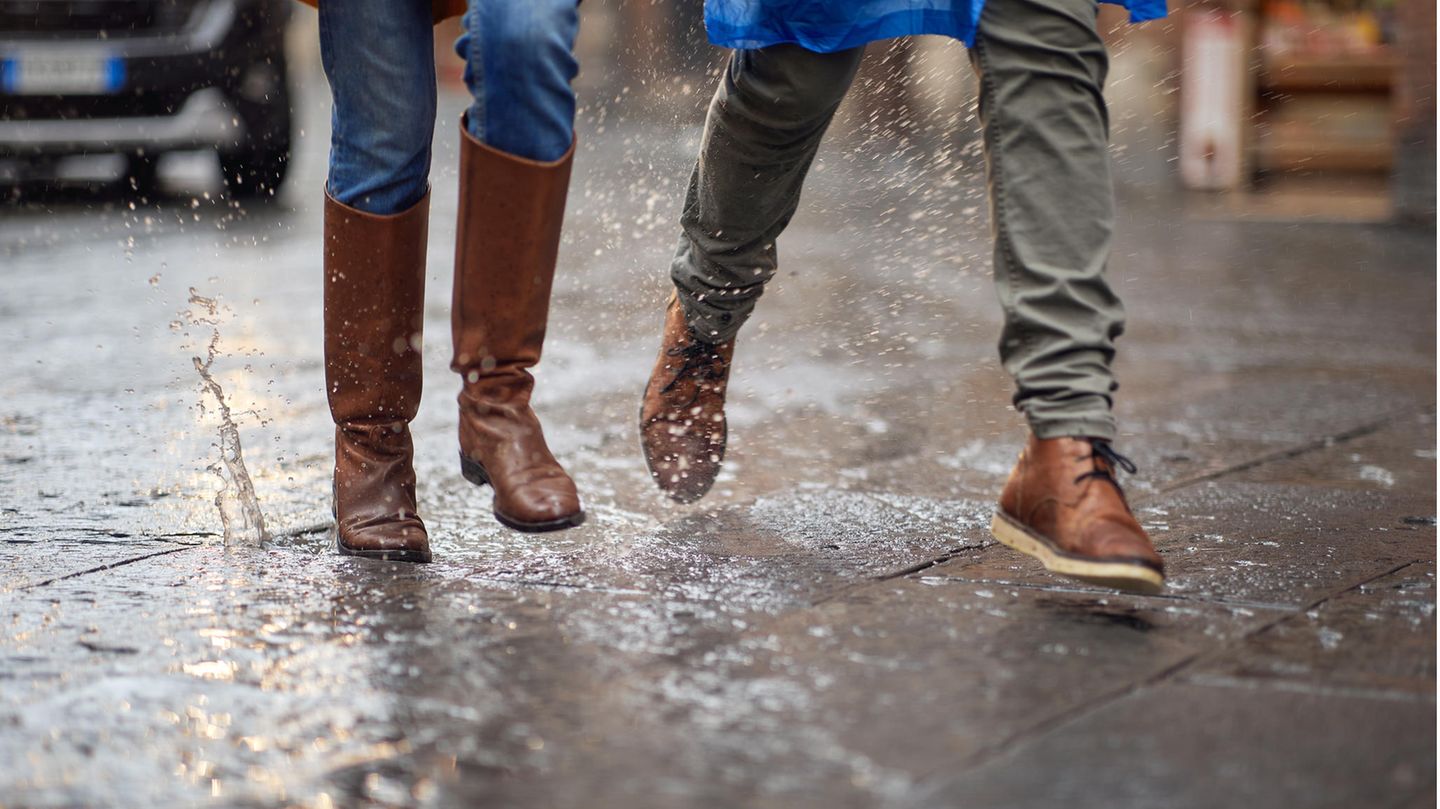Whether new or already worn: Regular waterproofing of your shoes is essential to ensure that your feet do not get wet. The additional protective film on the surface not only makes sensitive materials waterproof, but also preserves the color and increases durability.
If shoes get wet more often, their breathability decreases over time – this applies above all to sensitive materials such as leather, since their pores are not closed during further processing. Therefore, they are neither waterproof nor dirt-resistant and therefore automatically more susceptible to dirt or moisture. However, if you waterproof your shoes, ideally before you wear them for the first time (but also at regular intervals afterwards), you protect them from moisture and dirt. But which products are best suited for this and how do you use them correctly? We’ll tell you.
Tip: Secure discounts now – you will find an overview of current offers from OTTO.
Waterproofing new shoes: There are these methods
Most use a classic waterproofing spray to protect their shoes. But there are other products that achieve the same effect. Below you can find out what they are and how to use them.
1. Waterproofing spray
This is the most common product for impregnating shoes. Most sprays are suitable for textiles, leather and high-tech fabrics – but you should always check the packaging before you buy. Depending on the manufacturer, the type of application can differ, so always read the fine print. Basically one should always be suitable for shoes made of suede (i.e. suede and nubuck leather) or synthetics. And this is how the product is used: Spray the shoes with a safety distance of at least 30 centimeters all around. Allow the product to absorb briefly, repeat the process (if recommended by the manufacturer) and wait 24 hours before wearing for the first time.
Important:
Only use a waterproofing spray outdoors and be careful not to inhale the fumes.
2. Shoe wax or cream
As an alternative to the impregnation spray, you can also use a or one use for outdoor and hiking shoes. Both products have a caring and protective function. Smooth leather in particular can be treated well with a wax or a cream, as the contents have to be worked into the surface of the shoes with a clean cloth. If possible, remove the shoelaces beforehand to impregnate the entire surface. You should then wait at least 24 hours before wearing the shoes outside. So that the wax or cream can be absorbed more easily, it also makes sense to moisten the leather beforehand – the same also applies to using a waterproofing spray.
Another note: If you want to impregnate so-called Gore-Tex shoes, you should not use oily or greasy care products such as shoe wax – as this would impair the functionality of the membrane. The classic impregnation spray is the better choice here, as it does not clog the pores. There are even special ones for cycling shoes (and clothing). that you can use.
Why worn shoes are impregnated
Unfortunately, waterproofing new shoes is far from enough: wearing them exposes them to all kinds of weather conditions – and sooner or later they lose their protection. In order to maintain this permanently, especially sensitive leather, sports and outdoor shoes made of suede and suede (smooth leather is less susceptible to moisture and dirt) should be treated regularly: But before you start with the actual begin, dried dust and dirt must be removed. It is best to use a suitable shoe brush for this. The next steps were explained in the previous paragraph.
Impregnating shoes: When and how often?
After the first impregnation, your shoes should be treated at regular intervals. How often exactly depends on the respective materials. In principle, however, you can assume that the protection against dirt and moisture will decrease within four to eight weeks – depending on how often you wear the shoes. At the latest, however, when you notice that your feet are getting wet because the material is soaking up water, it is time to re-impregnate with the appropriate spray, cream or wax.
Source: Stern
I am an author and journalist who has worked in the entertainment industry for over a decade. I currently work as a news editor at a major news website, and my focus is on covering the latest trends in entertainment. I also write occasional pieces for other outlets, and have authored two books about the entertainment industry.




